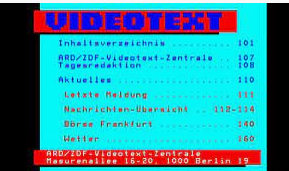
Slide title
Write your caption hereButton
Videotex (or interactive videotext) was one of the earliest implementations of an end-user information system. From the late 1970s to early 2010s, it was used to deliver information (usually pages of text) to a user in computer-like format, displayed on a television or a dumb terminal using modems to send data in both directions. AOL used modems this way. Unlike the modern Internet, before the world-wide web, these videotex services were highly centralized. Time Inc’s TVIS developed a consumer-friendly videotex service that allowed shopping and data searching and news and games. (See Teletext.) It was market tested in a venture with newspaper groups, but abandoned by top management.
Monica was hired as head of strategy for TVIS, the incubator of digital services. She developed the product outlines, the pricing parameters, the hardware strategy, and business models for teletext and videotext; and later, video games. Monica realized and presented to Time Inc’s leadership the extraordinary advertising potential of teletext and videotext, projecting billions of dollars siphoned off from established media such as magazines, newspaper classifieds and local television. The technology and content needed more work and market testing to achieve a fully-fledged product, but Video Group leadership cancelled the experiment. Instead of developing in-house, AOL was bought for a billion dollars.

